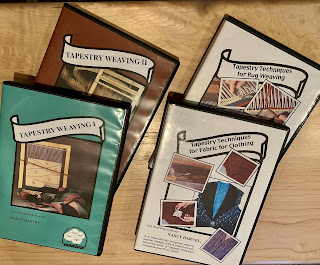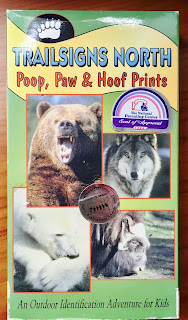Years ago, while traveling in the Southwest we stopped by Charles Loloma’s
studio on the Hopi Reservation. Some of his unique and breathtaking jewelry
is on display in the Smithsonian. When he learned we were weavers, he encouraged
us to try on some of his stunning jewelry. I tried on a plain gold band that
was inlaid with turquoise on the inside. He loved the idea that there
was a surprise on the inside.
I incorporated that thought process in some of the vests I wove.
This piece of fabric was woven like a tapestry in a side to side direction and
then the fabric was given a 1/4 turn before I cut out the pattern pieces.
The “surprise” lining was created by simple rows of stitching that replicated
the design areas on the outside of the fabric. I used a strand of the
black yarn used to weave the black areas of the fabric to create the lines.
My process for using tapestry techniques for clothing was planned out
on my design paper before I wove it so that all the seam lines
would allow the visual design to carry around the body and over the shoulders,
making it interesting for the viewer whether you were coming or going!!!
The silk threads in this vest were painted with fabric dyes, before threading
the loom, which created the random color combinations. This is called
"warp painting". The threads were
spaced very close together on the loom (about 24 threads per inch)
and woven with a navy silk thread so only the warp (threads on the loom)
showed in the finished piece. It's called a "warp faced fabric", when mainly the
warp shows. Tapestry on the other hand is a "weft faced structure" where
the yarn you weave with (weft) is the dominant thread.
I used some of the left over fabric dye
to tie-dye some silk fabric for the “surprise” inside this vest.
So I cut up the back and front and and applied the pieces to the front
of the jacket and then
purchased the most scrumptious perfect piece of silk lining material
(no I didn't weave the lining, but I could have), and added a little bling with
a few dangling beads!!!
told us how she had developed a variety of natural colored cotton. Levi
and once again got out my fabric dyes and stencils
of the company was to preserve many textile hand craft techniques
of the past, and to provide quality instructional material in the format
of how-to-videos. These videos taught the viewer step by step
“how to do” the process and were not a simple overview
of the process.
Each DVD includes a written instruction sheet that lists
supplies and materials needed, along with patterns for the project
featured on the cover. The business was similar to being a book publisher.
We contracted with an expert, in a specific field, to write a script for each
instructional program we wanted to produce.
They were paid for their travel & lodging
and received royalties based on sales.
In addition to producing, directing & editing this series, I was
the workshop instructor on 4 of these videos.
In 1998 when Don and I retired, we sold Victorian Video Productions and
its' entire craft video series to Yarn Barn of Lawrence KS.
Many of which are still available today on DVD.
Just for the fun of it, I produced this outdoor identification video
for kids, which we filmed in AK. We were honored to have
received so many awards and outstanding reviews.
THE END IS IN SIGHT...
The loom is ready to go, all the other materials,
yarns and books are packaged and waiting.
How did this all happen? Well, my Dad was a coach and he told me I could do anything
I wanted to if I had the fortitude to give it my best shot, and
I believed him. And a supportive spouse encouraging you every step of the way
made it easy to try. However, I must admit throughout this era whenever
I said “That gives me an idea”, with his eyes rolling skyward,
Don smiled and said “OMG not another one!!!
THE END


























No comments:
Post a Comment